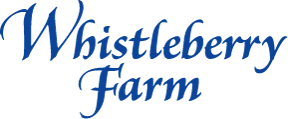Dark Cornish Chickens
The Dark Cornish is a traditional chicken developed purely for great taste. To back up, the Cornish/Rock hybrid cross was developed to meet the demands of the commercial market, and that is the type of chicken you see in the average store. Way back when, the Rock was chosen to contribute its size and fast growth to the hybrid mix. The Cornish was chosen to add better flavor. That hybrid cross, many generations later, has resulted in a product of breeding so selective and so specific as to bear no resemblance to any of the original heavy meat breeds used to produce it. It can be grown, and we have grown it, on pasture and without drugs. The bird of choice here is the uncompromised original, the Dark Cornish.
The Dark Cornish is indeed a small bird. It is a luxury. I have been growing them for myself for years. It results in a bird a little larger than a Cornish Game Hen, with the appearance of a plump roaster. We grow them to about 12 weeks and they are still small. They are very active birds, forage as aggressively as anything I have ever raised, and the worst thing I can say bout them is that they are very, very hard to catch. I refer to them as my feral chickens. They have great instincts about avoiding predators, although they are not very nice-natured. If I ever go out in the morning and find a red fox dead in the yard, Iíll know that one of the Dark Cornish got him. They are expensive to raise. You will have a tasty little dinner for two with leftovers, or for four without anything to put away.
A NOTE ON WHAT WE DO NOT RAISE: We do not raise the over-sized, double-wide birds you see in the grocery store. Almost all of the chicken you have ever seen in a supermarket is of one general type, derived from the Cornish Cross hybrid. The Cornish Cross is a large broiler/roaster designed for commercial production, but amazingly adaptable f or pastured, no-drug rearing. The controversy over this bird arises from the fact that it owes its existence to the industryís desire to create a creature that could survive the abuses of confinement rearing, grow at an abnormal rate and be ready for butcher in 6-8 weeks. It is not a breed; it will not reproduce true to type. It the end point of selective hybridization, and the industry will create more next year from the same hybridization methods. It is a food source whose genetics are owned by corporations. It has been developed to withstand the cruelty and abuses of the commercial poultry industry. If is disappeared tomorrow, those abusive management practices would have to change. All of that has led me to be concerned about raising these hybrids, as has the fact that raising them is disapproved of by people whose opinion I respect, like the folks from the Animal Welfare Institute, and the American Livestock Breeds Conservancy. It concerns me even though pasture rearing that bird is an improvement over buying one in the store, for you and the bird. On balance, I have decided against doing so. In part that is because I have raised them on pasture and concluded that while they thrived and foraged in a pastured, no-drug environment, their failure to run around like other chickens suggested that they were not comfortable trying to support their immense bodies on what are after all, little chicken legs.
